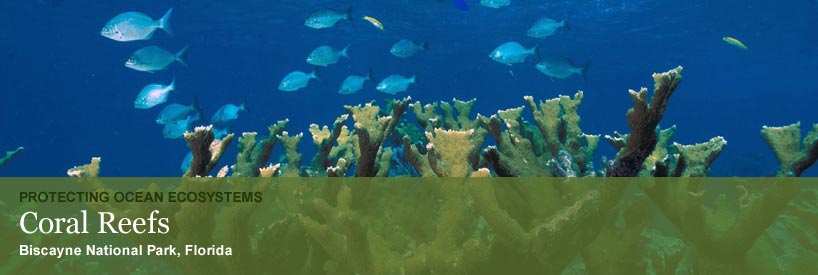Coral reefs, complex, mysterious communities of delicate marine life, are in danger. More than 27 percent of the planet’s reefs are gone or have been seriously damaged by boat collisions, polluted water, climate change, and disease. Although reefs are less than 1 percent of the earth’s surface, they harbor more than 70 percent of the marine species. Biscayne National Park is home to part of the third largest coral reef track in the world. It’s also a popular fishing, boating, and diving destination, and park rangers and community partners are working closely to prevent reef damage and identify ways to repair damage already done. One promising option: park scientists and volunteers are salvaging pieces of broken coral and nurturing them back to health. The park’s veteran coastal oceanographer Richard Curry says “the coral nursery research is giving us new insight about coral growth, reproduction, and the viability of re-seeding coral reefs. Our community volunteers are developing scientific processes that offer hope for coral reef recovery worldwide.”
Today, the National Park Service protects coral reefs and other critical habitat in ocean and coastal ecosystems in more than 70 national parks – making America’s Best Idea even better.



















